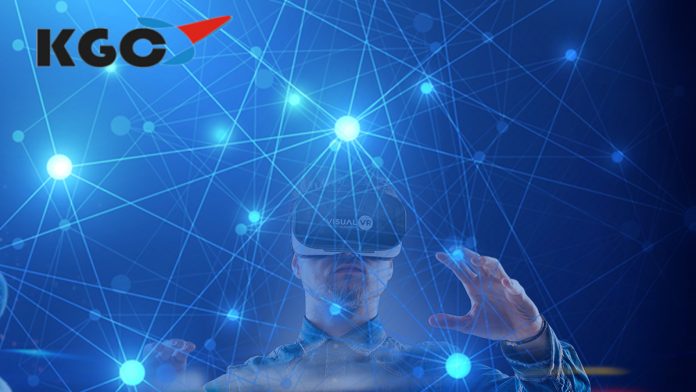Devices like virtual reality headsets, digital glasses, smartphones, and other devices will allow users to access 3-D virtual or augmented reality environments where they can work, connect with friends, conduct business, visit remote locations, and access educational opportunities, all in an environment mediated by technology in new and immersive ways, according to the vision for the metaverse articulated by social media and technology companies.
The term “metaverse” is a combination of the words “meta” and “universe.” It’s mostly used to refer to an upcoming future iteration of the internet that’s been dubbed Web 3.0. The rise of online 3-D or virtually integrated environments that provide users with virtual reality and augmented reality experiences is expected as the internet evolves.
What is Metaverse and How Does it Work?
Both current and future integrated digital platforms focused on virtual and augmented reality are referred to as the metaverse. It is widely regarded as the internet’s next frontier, with the tech industry and other sectors seeing it as a significant business and financial opportunity.
A metaverse is a collection of 3D virtual worlds designed to foster social interaction. The term is frequently used in futurism and science fiction to describe a hypothetical iteration of the Internet as a single, universal virtual world facilitated by the use of virtual and augmented reality headsets.
The metaverse, then, is a collection of digital spaces and experiences that are currently being developed by companies in order to provide more realistic and immersive digital experiences. From augmented reality collaboration platforms that can improve collaboration and integration to work productivity platforms for remote teams that could, for example, allow real estate agents to host virtual home tours, the technology has a wide range of potential applications.
Some aspects of the metaverse are currently integrated into internet-enabled video games like Second Life, Minecraft, and Fortnite. These games provide immersive social and virtual experiences with a persistent virtual world in which players from all over the world can participate at the same time. While not identical to virtual reality, the metaverse will provide more virtual reality experiences.
Many social media and tech companies, including Meta Platforms (formerly Facebook) and Microsoft, are heavily investing in Social VR with the goal of creating platforms where people can connect socially or work remotely via Microsoft Teams.
The metaverse, then, is a collection of digital spaces and experiences that companies are currently developing in order to provide more realistic and immersive digital experiences. The technology has a wide range of potential applications, from augmented reality collaboration platforms that can improve collaboration and integration to work productivity platforms for remote teams that could, for example, allow real estate agents to host virtual home tours.
Virtual Reality (VR)
A virtual reality headset projects realistic images, sounds, and other sensations to a user within a virtual environment. Virtual reality is currently used in video games, but it could also be used in virtual meetings, medical training, and military training in the future. Virtual reality equipment allows users to look around a virtual world, move around it, and interact with objects and other users.
Virtual and Augmented Reality
The merging of real and virtual worlds to create new ways to interact with physical and digital spaces and other users is known as mixed reality. You are not entirely in the virtual world or entirely in the real world in mixed reality; instead, you are somewhere along the ‘virtuality continuum’ between the real and virtual worlds.
Place-specific simulations, such as 3D representations of charts or concepts projected to virtual reality headsets or glasses in a university lecture, or augmented reality in Pokemon Go, where users could see Pokemon they found in the real world via their mobile device’s camera, are examples of mixed reality. Video games, education, military training, healthcare, and the integration of humans and robotics are all possible uses for mixed reality.
Augmented Reality
In the same way that mixed reality creates an interactive way to experience real-world environments, augmented reality does the same. Augmented reality uses digital sensory additions like visuals, sounds, sensory data, and olfactory data to enhance the real world. The integration of real and virtual worlds, real-time interaction, and 3D visualizations of both virtual and real objects are all features of augmented reality. Allowing shoppers to visualize a product they’re considering in an environment that resembles their own home is one example of how it could be used.
Virtual Economy
The term “virtual economy” was first applied to the exchange or sale of virtual goods in online games, especially massive multiplayer online games. Players can buy things from each other and exchange real money for game money in some of these games. Cryptocurrencies and non-fungible tokens can now be included in virtual economies. Many people believe that in the future, social media companies and other businesses will be able to create their own virtual currencies, though regulators may limit their ability to do so.
What Is Today’s Use Of The Metaverse?
Facebook announced in Fall 2021 that it would rebrand as Meta Platforms (NASDAQ:FB) and invest heavily in creating metaverse experiences. It will do so by utilizing its current ownership of Oculus, a virtual reality hardware company.
Immersive virtual reality experiences, according to Meta Platforms, are the way people will interact on social media in the future. Meta’s vision, on the other hand, is speculative and would rely on technologies and server capacity that do not yet exist. It also assumes widespread use of hardware like virtual reality headsets and digital glasses.
Meanwhile, Microsoft (NASDAQ:MSFT) is focusing on adapting existing technologies for the metaverse. They have a mixed reality platform called Mesh that allows users to access augmented reality environments without having to buy a virtual reality headset via their smartphone or laptop. Microsoft also intends to integrate Microsoft Teams into the metaverse, allowing remote workers and virtual meetings to have a more immersive experience.
Roblox (NYSE:RBLX) is a company that creates integrated virtual experiences for gamers. Roblox is an online platform where users can play digital games. It is currently targeted at teenagers. Adult gaming is one of the company’s goals.
Nvidia Corp (NASDAQ:NVDA) is another company working on metaverse projects. It is developing an Omniverse platform that can connect 3D virtual words in a shared universe and is currently being used to create simulations of buildings and factories. Nike (NYSE:NKE) is also pursuing a metaverse strategy by registering digital trademarks for its main logos in order to create virtual Nike sneakers and apparel, as well as launching Nikeland on the Roblox platform, where users can play sports games.
Many companies will be developing the architectures, hardware, and software that will power the metaverse version of Web 3.0, so the metaverse is expected to transform the tech sector. However, because the metaverse proposes to change things as simple as how people shop for groceries, navigate through a city, tour an apartment, and interact with businesses and advertisements as a consumer, it will also affect companies outside the technology sphere.
Related post: FUTURE JOB OPPORTUNITIES IN THE METAVERSE
While it is unclear whether the metaverse’s visions will come true or if the health, privacy, and regulatory concerns it has already raised will limit the scope of its implementation, it has the potential to disrupt a variety of industries and sectors by requiring them to spend more money on technology or compete with one another to provide metaverse experiences to their customers.
Examples of Metaverse
A number of companies have made metaverse products or services available to consumers, or have stated that they will do so in the future. Some examples are as follows:
- Snap
Since the app’s inception, Snapchat (SNAP) has been developing augmented reality filters. Users can use their phone camera to manipulate the world with their photo filters. They released augmented reality glasses in 2021, which can be used to enhance users’ perceptions of reality outside of their app.
2. Epic Games
The popular digital game Fortnight was created by Epic Games. While the company began with video games, it has since expanded to include virtual social events such as music concerts and dance parties. These allow users to immerse themselves in a virtual environment.
3. Medical Education
Virtual reality and augmented reality are being used by medical learning companies to disrupt medical education by simulating patient and surgical interactions and allowing students to practice new techniques.
4. Second Life
Second Life, a once-popular online massive multiplayer game, was founded in 2003 and allowed players to live a different life within a virtual world. The concept was an early metaverse experience created by Linden Lab in San Francisco, and it was one of the first popular examples of the virtual economy, with users purchasing tokens to purchase items in the game.




















